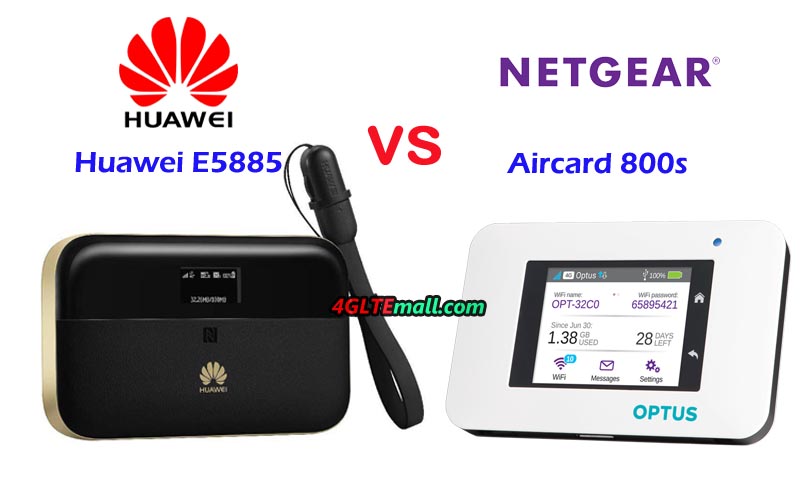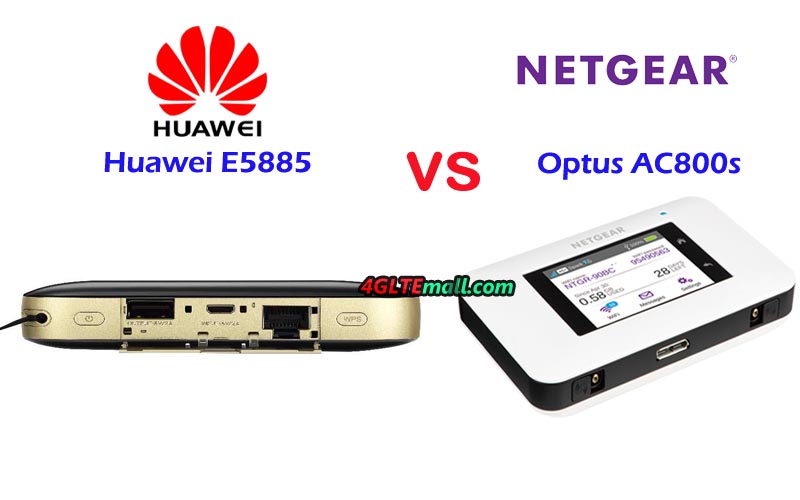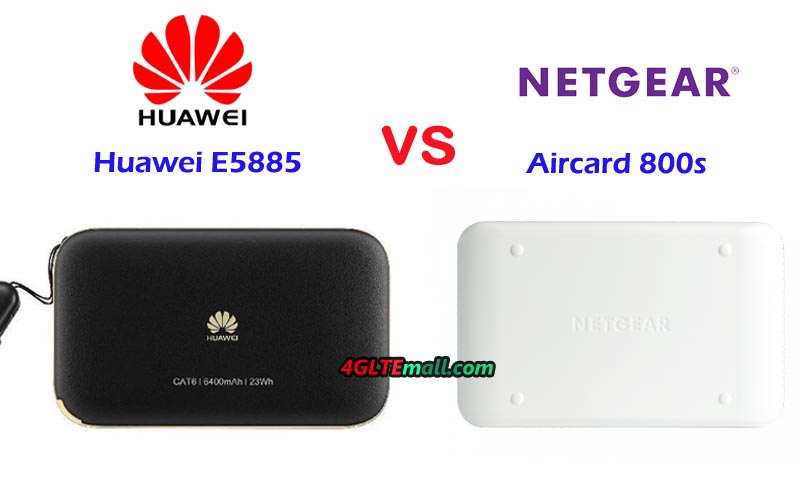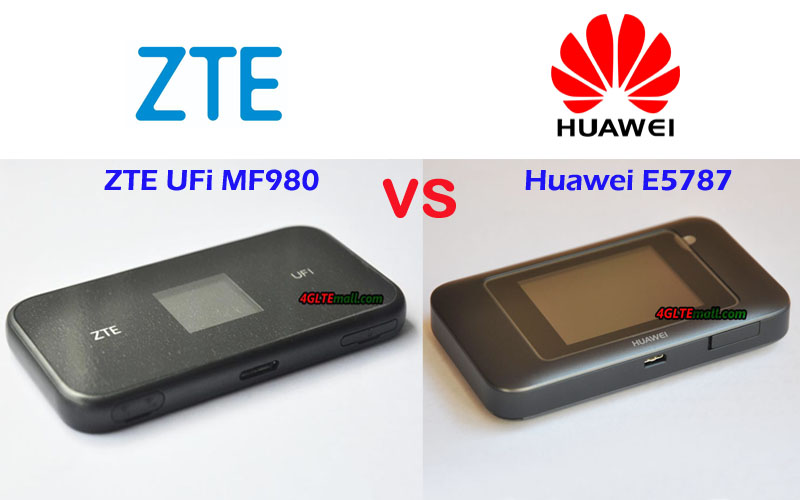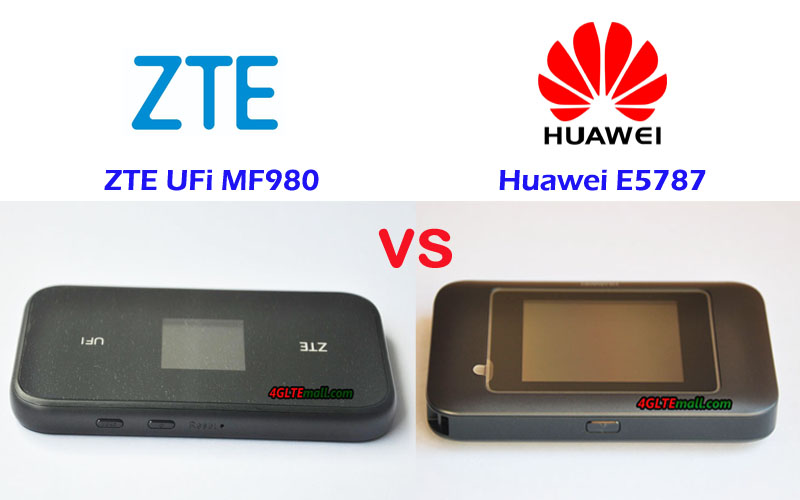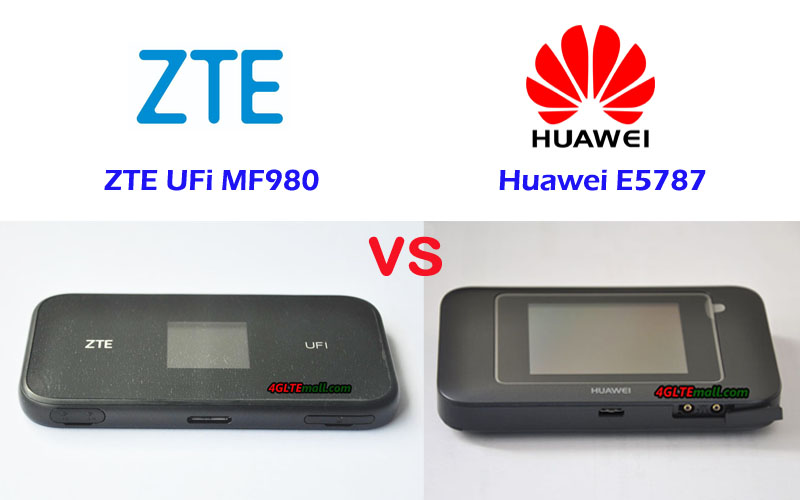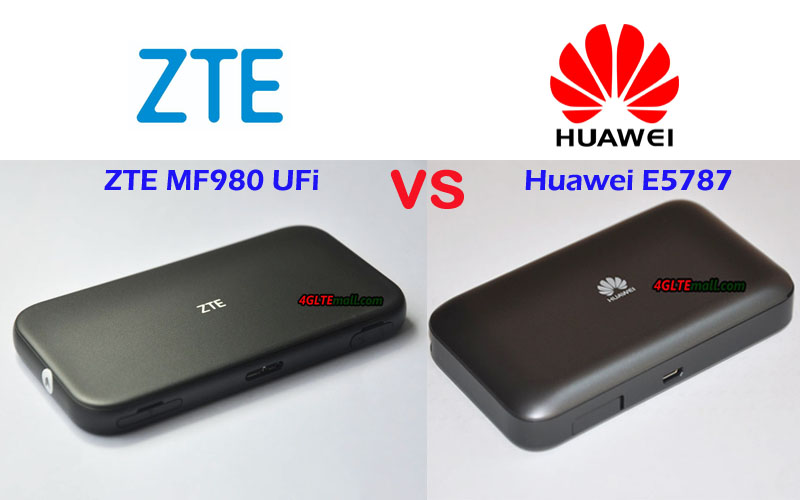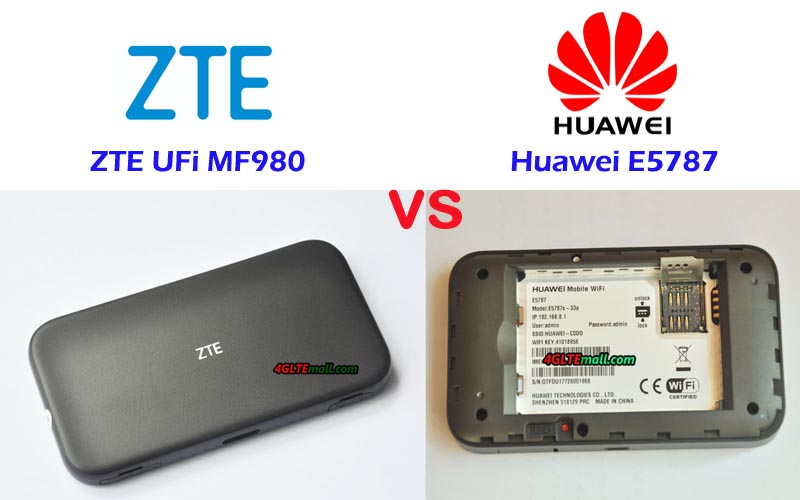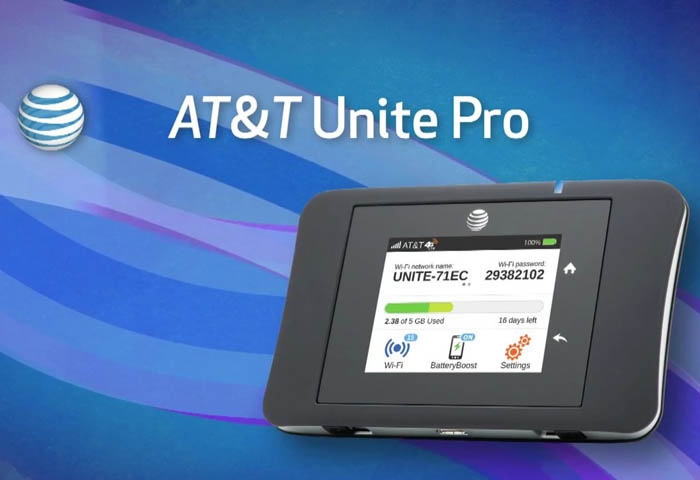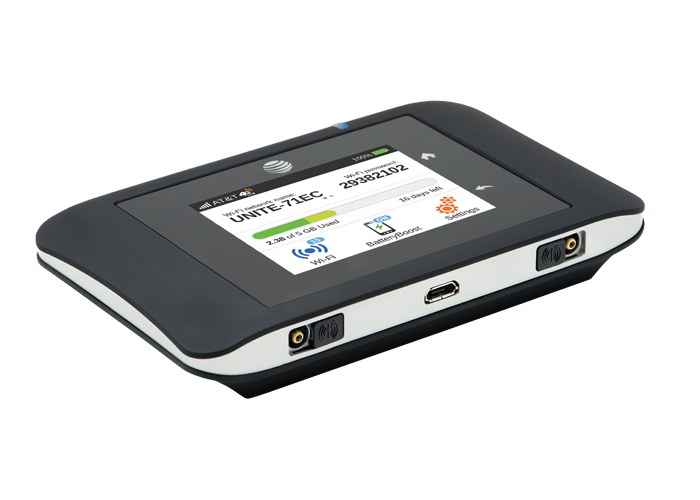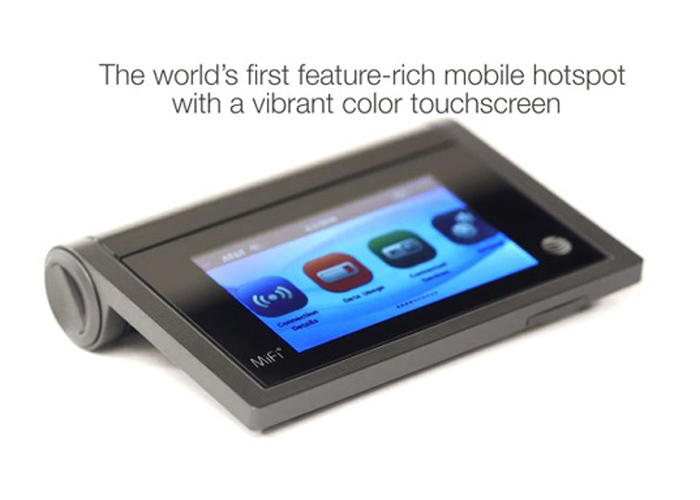As one of the top networking equipment vendor, Netgear had presented many 4G WiFi routers to the public such as the well-known Nighthawk M1, Aircard 810s, Aircard 815s(also known as AT&T Unite Explore) and now a new mobile WiFi router Aircard 800s is available for Australian network provider Optus and it got a new name Optus 4G WiFi modem 800S. The aggressive Chinese competitor Huawei also follows the steps to present new wireless router even though it has many 4G pocket WiFi router available for various network providers such as Huawei E5788, E5787, E5786, E5770, etc…Now the Huawei E5885 is available. Somebody may have the question: What’s the difference between the Netgear Aircard 800s and Huawei E5885? Which one is better to buy for global travel? You may find the answers in this article.
Aircard 800s VS Huawei E5885 Appearance and Interface
If you are familiar with other Netgear mobile hotspot routers, you may know the Netgear 4G mobile hotspots are in very similar design, so as the Netgear Aircard 800s. There is a touchscreen on the front, at the side of the display, there are a Home button and Back button for operation. The Optus logo is also at the side of the screen. The power button is on the top edge side while on the opposite side, there is the USB 3.0 port and two connectors for external LTE antennas. The connector type is TS-9 and covered by two small caps. The back cover could be opened and the battery is removable for exchange and inserting the SIM card.
Unlike most of other Huawei Mobile WiFi 4G, the Huawei E5885 has different features. On the front, there is a small LED screen to show the internet connection status, but it’s not a touchscreen. The Huawei logo is below the screen. The power button and WPS button are on the top edge side. Between the two buttons, there is a small cap, open it, you will see the Ethernet port(RJ45) and two USB ports(Input and output). There is no connector for an external antenna. The back cover could be opened, but the battery is built-in and non-removable. The SIM card slot and Micro SD storage card slot are available. And Huawei E5885 is thicker than Aircard 800s.
Huawei E5885 VS Netgear AC800S Specs and Features
From the appearance and interfaces, we can see the Netgear AC800S is a traditional 4G pocket WiFi router while the Huawei E5885 is a mobile hotspot with an Ethernet port. Then let’s have a comparison of the specs of Huawei E5885 and Netgear Aircard 800s:
| Model | Huawei E5885Ls-93a | Netgear AC800S |
| Product type | LTE Mobile Hotspot with Ethernet port | LTE Mobile Hotspot |
| Category | LTE Cat.6 | LTE Cat.9 |
| Chipset | Hisilicon LTE Cat6 chipset | Qualcomm MDM9240 |
| Data rates | DL 300Mbps/UL 50Mbps | DL 450Mbps/UL 50Mbps |
| Supported 4G LTE frequency bands | * FDD-LTE Band 1/2/3/4/5/7/8/19/20 * TDD-LTE: Band 38/40/41 |
B1, B3, B7, B28, B40 |
| WLAN | 802.11a/b/g/n/ac, dual-band 2.4GHz & 5GHz | 802.11a/b/g/n/ac, dual-band 2.4GHz & 5GHz |
| Max support users | 32 users | 15 users |
| MIMO | 2 X 2 MIMO | 2 x 2 MIMO |
| Connector for external antenna | No connector | Two, TS-9 jacks |
| Buy Antenna | N/A | Netgear AC800s External Antenna |
| App management | Huawei Hilink APP 3.0 | Netgear Aircard APP |
| SIM type | Micro SIM | Micro SIM |
| Battery | Non-removable, 6400mAh | Removable, 2930 mAh |
| Dimensions | 112.00 x 69.20 x 23.00mm | 110 x 68 x 16.1 mm |
| Ethernet Port | On port for WAN/LAN port(RJ-45) | No |
| Datasheet download | Huawei E5885 Datasheet | Netgear AC800S Datasheet |
| User Manual | Huawei E5885 Manual | Optus 4G modem 800S Manual |
| Other features | Power bank, CA, NFC | 3 band CA |
| Firmware download | Huawei E5885 Firmware | Netgear AC800S Firmware |
| Drivers | Huawei E5885 driver | Netgear AC800S driver |
| Reviews | Huawei E5885 Review | Netgear AC800s review |
| Price | 279.00USD | 199.00USD |
Summary
From the specs table, we can see the Netgear Aircard 800s(Optus 4G WiFi modem 800s) is more advanced technology, it supports LTE cat.9 and can achieve download speed up to 450Mbps while the Huawei E5885Ls-93s supports LTE Cat.6 and achieve download speed up to 300mbps. They are configured with a different chipset. The Optus 4G WiFi modem 800s supports less LTE frequency bands than that of Huawei E5885LS-93a, so Huawei E5885ls-93 would support more LTE network providers worldwide. Huawei Mobile WiFi E5885 supports 32 wireless users while Netgear AC800S supports only 15 users. However, there is no external antenna connector in Huawei E5885, which is not good for users who will go the areas with weak signal.
The Huawei E5885 large battery pack is really good, the capacity of 6400mAh makes it work like a mobile power bank to charge other devices. And the RJ45 Ethernet port is for both LAN and WAN, which is very useful for travel. From the specs comparison, we can conclude that the Optus 800s would provide faster surfing speed with advanced technology. However, the Huawei E5885 powerful and practical functions are also attractive and friendly for users. If you just need to get faster speed, the Netgear 800 is recommended and the price is attractive. But if you want a powerful pocket WiFi with multi-functions, the Huawei E5885 would be no doubt better to consider.
